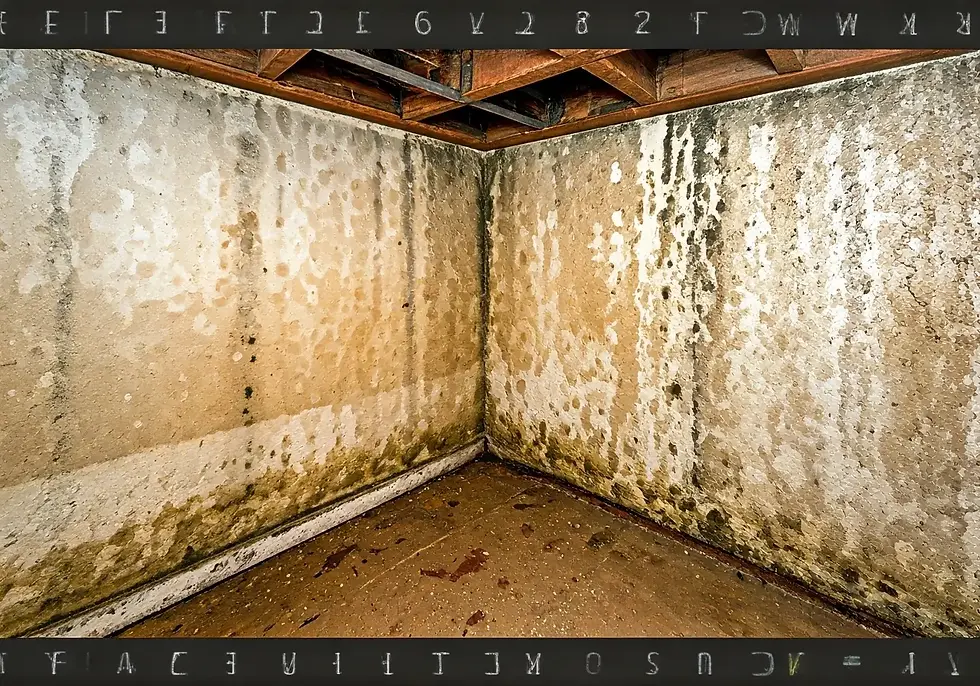Mold Mitigation Strategies for New York Homes
- Angelo DeFilippis
- Jul 3
- 4 min read
Mold is a common issue that many homeowners in New York face due to the region's humid climate and older buildings. Understanding how to effectively mitigate mold is crucial for maintaining a healthy living environment. In this guide, we'll explore practical strategies for preventing and addressing mold issues in New York homes.

Understanding the Causes of Mold in New York Homes
New York's climate, with its varying humidity levels throughout the year, contributes significantly to mold growth. Older buildings, common in New York, often have outdated infrastructure that can exacerbate moisture issues. Condensation and inadequate ventilation offer ideal breeding grounds for mold. Furthermore, water damage from leaks or flooding, if not addressed promptly, creates optimal conditions for mold to thrive. Understanding these environmental conditions helps in identifying potential risk areas and lays the groundwork for effective mold mitigation.
The architectural complexity of New York buildings can also obscure signs of mold. Hidden spaces, such as behind wallpaper or under floorboards, often conceal mold growth, making detection challenging. Recognizing these indirect symptoms, like a damp odor or inexplicable health problems, could be key indicators of hidden mold. By recognizing and addressing these subtle warning signs early, homeowners can prevent small mold issues from becoming major health and structural concerns.
Preventive Measures to Combat Mold Growth
Prevention starts with controlling moisture levels. Homes should maintain a humidity level below 60% to effectively reduce the risk of mold growth. Utilizing dehumidifiers, especially in basements and other prone areas, can help maintain these levels. Regularly cleaning HVAC systems and ensuring they function correctly also plays an essential role in controlling indoor humidity and ventilation.
Daily habits can significantly contribute to mold prevention. Ensuring that kitchens and bathrooms are well-ventilated during and after use can prevent moisture buildup. Homeowners should also be diligent about repairing leaks promptly, as even small drips can lead to significant mold issues over time. Taking these steps not only helps in mold prevention but also helps in maintaining overall air quality and cleanliness within the home.
Consider adding mold-resistant products to your home. Mold-resistant drywall and paint can be particularly beneficial in high-humidity areas. Installing these products in areas prone to moisture exposure is a proactive measure that complements broader prevention strategies.
DIY Mold Mitigation Techniques
For those dealing with minor mold problems, several DIY methods can be effective. White vinegar and baking soda are natural cleaning solutions that can safely eliminate mold on hard surfaces. Combining them creates a potent cleaning agent that is not only effective but also eco-friendly.
Before attempting any DIY mold removal, it's crucial to wear protective gear. This includes gloves and a mask to avoid inhaling mold spores. Ensuring the area is well-ventilated will further protect you during the cleaning process. By equipping yourself with the right tools and knowledge, tackling small mold infestations can be both safe and effective.
When cleaning, it's important to start by sealing off the affected area to avoid spreading spores. Use plastic sheeting to cover doorways and vents. Clean the area thoroughly with your chosen solution, and ensure it dries completely before removing any containment. Successfully applying these techniques requires patience and diligence, but can be a cost-effective solution to minor mold issues.
When to Call in Professional Mold Remediation Services
It's crucial to recognize when mold problems have surpassed the reach of DIY solutions. If mold covers an area larger than 10 square feet, it's advisable to call in professional help. Professionals have the training and equipment necessary to handle extensive mold problems safely and effectively. They can quickly identify and treat hard-to-reach places, ensuring mold is completely removed.
Professional remediation services use advanced techniques like HEPA filtration and antimicrobial treatments to ensure comprehensive mold removal. HEPA filters effectively trap mold spores, preventing them from becoming airborne during the cleaning process. These specialized methods ensure that affected areas are thoroughly cleaned and less likely to experience recurring mold issues.
Engaging with such services not only assures thorough mold removal but also offers a preventative approach. Professionals can provide insights into how to prevent future mold growth based on your home's specific conditions and needs, making it a sound investment for long-term health and safety.
Maintaining a Mold-Free Home in the Long Run
Periodic home inspections are vital in spotting early signs of mold or moisture problems. Hiring a professional to inspect your home's HVAC system annually is a proactive step toward maintaining a balanced moisture level in your home. Keeping gutters clean and ensuring that water drains away from your home can prevent water from seeping into the foundation.
Stay informed about new mold prevention technologies and techniques. Advances in mold-resistant materials, such as anti-microbial coatings and paints, can make a significant difference in keeping your home mold-free. Adopting these technologies can complement traditional strategies, offering a more holistic approach to mold management.
Keeping Your Home Mold-Free: Prevention and Maintenance
Mold mitigation can seem daunting, but with the right knowledge and strategies, you can keep your New York home safe and healthy. Prioritizing prevention, regular maintenance, and understanding when to seek professional help can make all the difference. Stay proactive and vigilant, and mold will stay out of sight and mind. For more on keeping your home mold-free, visit our homepage.




Comments